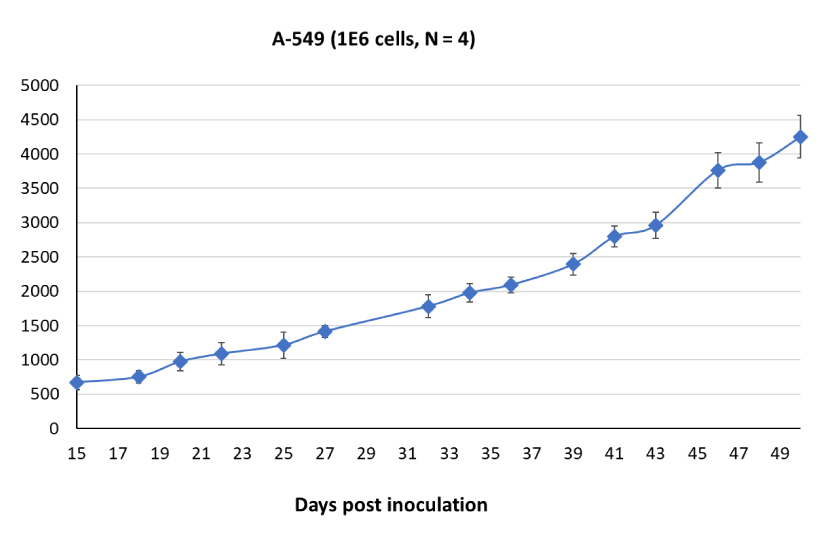About A-549
The A549 cell line, established in 1972 by D.J. Giard and colleagues, originated from lung carcinomatous tissue obtained from a 58-year-old Caucasian male. It has become a widely used human cell line in various research fields, including oncology, immuno-oncology, and toxicology.
In vitro, A549 cells exhibit monolayer growth and adhere to the culture flask, providing a convenient platform for experimental investigations. Genetic analysis of the A549 cell line has revealed several key mutations that contribute to its biological characteristics. These include alterations in genes such as KRAS, STK11/KEAP1, and TP53. Notably, dysregulation of K-Ras signaling in A549 cells leads to a compensatory upregulation of β-Catenin and a dependence on the Wnt pathway for maintaining cellular pathways. This suggests an intricate relationship between K-Ras and Wnt signaling in the context of A549 cell biology.
Additionally, the presence of STK11/KEAP1 co-mutation confers K-Ras independent cell proliferation, further contributing to tumor growth. Preliminary findings suggest that A549 cells may exhibit responsiveness to innovative chemotherapeutic agents, such as paclitaxel, docetaxel, and bevacizumab. These drugs have shown promise in the treatment of lung cancer and may have therapeutic potential against A549 cells. Consequently, the A549 cell line serves as a valuable tool for studying the efficacy and mechanisms of action of these novel chemotherapeutic agents.
A-549 Tumor Kinetics in the SRG™ Rat

In animal models, specifically the SRG rat model, A549 cells have been shown to form lobular tumors characterized by well-defined borders. This tumor model provides researchers with an in vivo system to investigate the behavior and characteristics of A549 cells within a tumor microenvironment. The ability of A549 cells to produce tumors with specific histological features in animal models adds to the relevance and utility of this cell line in preclinical research.
Products & Services
Xenograft Efficacy Studies
Includes collection of blood, tissues & tumor for ADME, PK/PD and analysis.
(Bi)weekly Tumor Sampling
Via fine needle aspiration (FNA). For longitudinal evaluation of drug exposure, histology and gene expression.
OncoRats
Cutting edge models optimized for engraftment.
Get help with your research by scheduling a call with Hera.
References (MLA):
- Nussinov, Ruth, et al. “Independent and Core Pathways in Oncogenic Kras Signaling.” Taylor & Francis Online, 18 July 2016, www.tandfonline.com/doi/full/10.1080/14789450.2016.1209417.
- Wohlhieter, Corrin, et al. “Concurrent Mutations in STK11 and KEAP1 Promote Ferroptosis Protection and SCD1 Dependence in Lung Cancer.” Cell, 1 Dec. 2020, www.cell.com/cell-reports/fulltext/S2211-1247(20)31433-9?_returnURL=https%3A%2F%2Flinkinghub.elsevier.com%2Fretrieve%2Fpii%2FS2211124720314339%3Fshowall%3Dtrue#%20.
